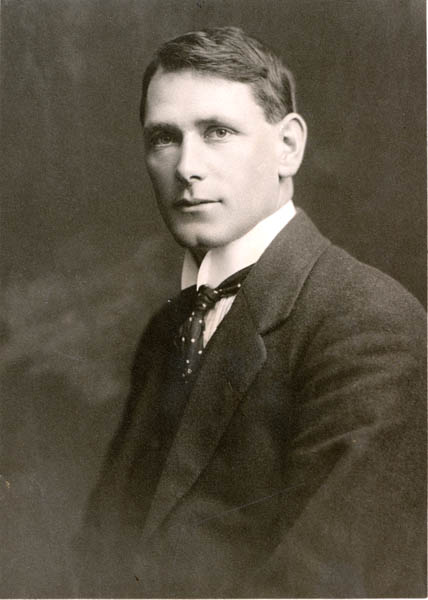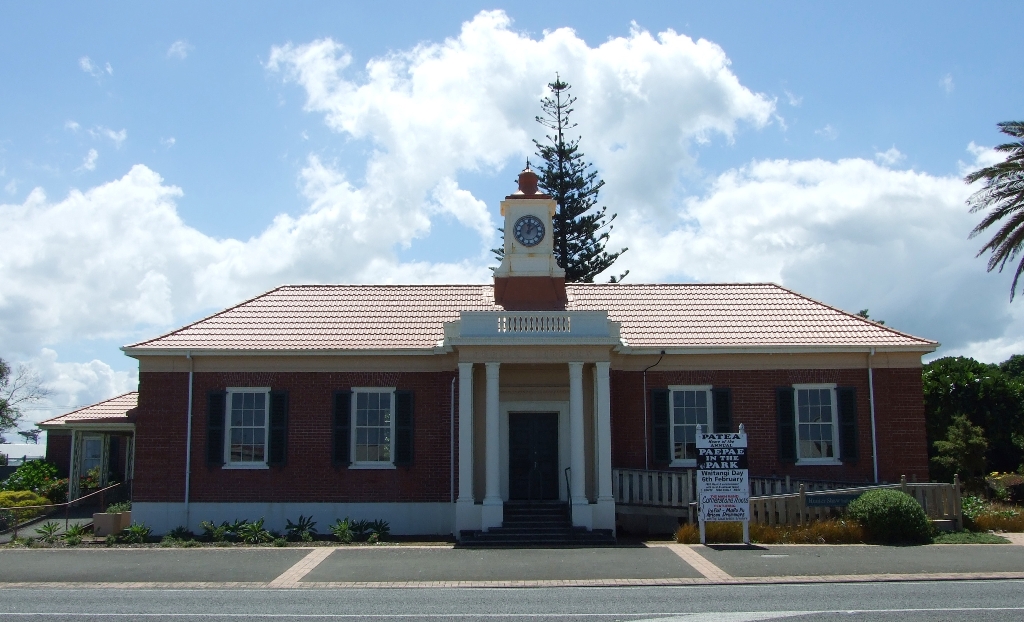



In a tiny library building in the tiny township of Pātea, on a handsome brass plate screwed to the wall, a visitor can read these words:
“PATEA PUBLIC LIBRARY
1930
This building was erected
as a memorial to HUNTER SHAW
late of Whenuakura. Out of
funds provided by his estate.
It fittingly perpetuates his
memory as one who lived an
unassuming honourable life
and bequeathed the whole
of his residuary estate
to charity
E F Warren - Executor
Gummer and Ford - Bignell and Son
Architects - Contractors
Duffill and Gibson - Supervising Architects”
And what is so special about this building? That it exists at all.
When Hunter Shaw arrived in New Zealand he probably had big plans. As the sixth in a family of ten children, he'd left Ireland at 17, bound for Australia where he expected to make his fortune on the goldfields. His father, a watchmaker and jeweller, arrived in Wellington in 1858 and set up shop on Lambton Quay. Hunter didn't make his fortune in gold and followed his father to New Zealand in 1860.
In 1873 he moved to Whenuakura, near Pātea, where he bought a 500 acre block of land he called 'Crescent Falls'. Here he lived for the rest of his life, sometimes in total seclusion and sometimes joining the human race at balls, debates and political meetings. He stayed single and spent his daylight hours clearing the land of mānuka, fern and flax. He also owned farmland at Kakaramea and Alton.
Hunter outlived all nine brothers and sisters. Not one of the Shaw clan married, so when he died in 1928, there was no one to leave property to. Buried beside a brother at Onehunga, the inscription on his headstone summed up Hunter's life: “Lived an honourable and simple life and generously bequeathed his wealth to charities.”
If Hunter Shaw had had descendants, the littlest library would never have been built. Not one to draw attention to himself in his lifetime, when he died a rich man in 1928, aged 92, he left £8500 (enough at the time to build many houses) to be shared several ways.
Some was for a children's ward at the public hospital, some for an operating table, some for a nurses' tennis court and some for a children's playground in the domain. What was left was earmarked for a public library and Plunket rooms.
It was a red letter day for Pātea when the Minister of Health and the Mayor of Pātea cut the ribbons on the new library, along with those on a new courthouse and a children's dental clinic.
The little library and Plunket rooms came from a Gummer & Ford plan almost identical to the prize-winning Remuera library designed by the firm two years before. Carefully detailed and made of red brick, it was built in the much admired Georgian style popular of the day. Inside, it boasted a lending library as well as a newspaper room.
Notable Hāwera architect John Alfred Duffill from the firm Duffill & Gibson, was called on to oversee construction. When it was finished, Pātea gained a small but noble service centre next to the town's civic block - and a wonderful edifice full of street appeal.
Please do not reproduce these images without permission from Puke Ariki.
Contact us for more information or you can order images online here.